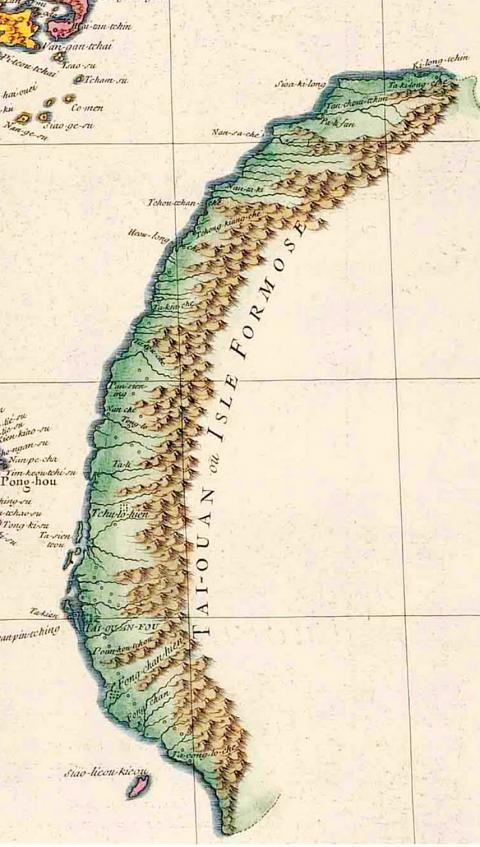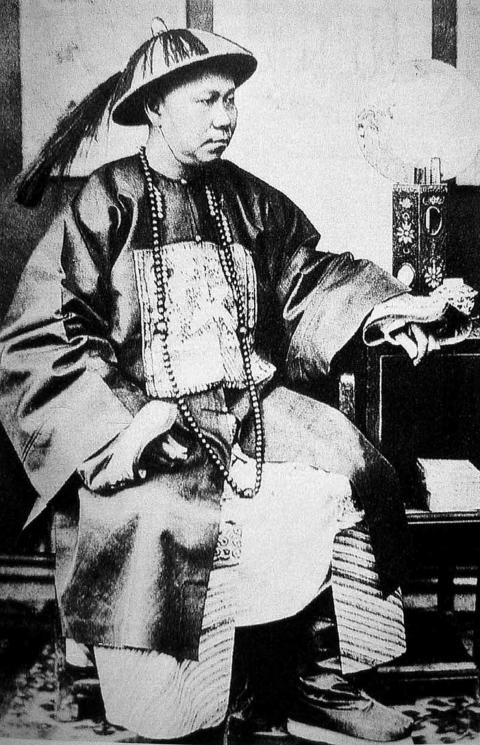Taiwan in Time: May 9 to May. 15
In 1874, former Xiamen consul Charles Le Gendre published a pamphlet titled, Is Aboriginal Formosa a Part of the Qing Empire? An Unbiased Statement of the Question.
The topic of interest was timely as it encapsulated much of the international debate before and after the Japanese military expedition to the Hengchun Peninsula (恆春半島 ) in response to the killing of 54 shipwrecked Ryukyuan sailors by Paiwan Aborigines.

Photo courtesy of Wikimedia Commons
Le Gendre had negotiated with Aborigines several years prior when they killed several shipwrecked Americans. He later traveled to Japan and became a political consultant who encouraged Japan to colonize the Aboriginal areas of Taiwan, as he considered them to belong to no country.
The military expedition and the resulting conflict, known as the Mudan Incident (牡丹社事件), ended with the Qing paying the Japanese to retreat. After the incident, the imperial court, which had long seen Taiwan as a backwater province unworthy of development, started to pay more attention to what was then still part of Fujian Province.
BEYOND REACH

Photo courtesy of Wikimedia Commons
Historian Wu Mi-cha (吳密察) writes in the preface to The Expedition to Formosa (征臺記事) that the Qing considered Taiwan, in its own words, “beyond the reach of our whip.”
The imperial court restricted cross-strait immigration and forbade settlers from moving into the eastern and southern regions populated by Aborigines as a form of population control, partially in fear of Taiwan becoming a sanctuary for renegades — not unlike the time when anti-Qing leader Cheng Cheng-kung (鄭成功), better known as Koxinga, used it as his base in 1661. Few troops were stationed to prevent a mutiny, Wu writes.
The Qing had always expected unrest to come from within — so it was a surprise when they heard that Japan had attacked, even though the troops landed on the Hengchun Peninsula, one of the Aboriginal areas.
Historian Lin Cheng-jung (林呈蓉) writes in her book, The Truth Behind the Mudan Incident (牡丹社事件的真相) that one required a separate passport — which curiously had to be obtained through the British consulate in Kaohsiung or Tainan — to enter such areas. The passport clearly stated that the region was outside of government jurisdiction.
Although Japanese troops landed on Taiwan on May 2, 1874, the Qing did not formally respond until May 11, when it released a statement requesting the Japanese to withdraw its troops, claiming that Japan had violated the Sino-Japanese Friendship and Trade Treaty, signed only three years previously.
On May 23, a ship carrying a Qing official arrived, demanding that the Japanese withdraw. Lin writes that the official did not even disembark, delivering the message and heading back to China — a telling sign the the empire was in decline, as it could not even send an army to deal with the fewer than 3,000 Japanese soldiers suffering from various tropical diseases.
OUT OF THE BACKWATERS
It was not until the Japanese and the Aborigines had already fought their battles and were in peace talks that Shen Baozhen (沈葆楨), China’s minister of naval affairs, arrived on June 21.
Lin writes that Shen not only did not protest Japan’s behavior, but stated his regret in “not being able to aid in the punishment of the Aborigine perpetrators.” In the prefectural capital of Tainan, Qing officials posted public notices stating that the government had obtained word from Japan that no more locals would be harmed, creating the false impression that they were in charge.
Imperial policy on Taiwan changed due to this event, realizing that passive governance would only lead to similar incidents and further questioning of its authority. China finally started developing the territory it had claimed since 1683.
Shen spent about a year in Taiwan after the incident as imperial commissioner. He commissioned Western-style fortifications in Tainan, including the Eternal Golden Castle fortress (億載金城), hired Western experts to help train soldiers, experiment with mechanical coal mining and install electricity, and he sent naval students to study in Europe.
First of all, per Shen’s suggestion, the government lifted the immigration restrictions and the ban on entering Aboriginal areas, and in fact even encouraged it. To “open up” and pacify (often by force) the Aboriginal mountain areas, three major roads were built in the north, central and south. Shen also changed the administrative structure of Taiwan.
To prevent more shipwrecks, the Qing — partly under international pressure — commissioned the construction of the Oluanpi Lighthouse (鵝鑾鼻燈塔) at the southernmost point of Taiwan a year later. Shen also divided Taiwan into smaller administrative regions, and Taipei Prefecture was born during this time.
Despite the Qing’s efforts, Taiwan was invaded again a decade later when the Sino-French war spilled across the strait.
Taiwan in Time, a column about Taiwan’s history that is published every Sunday, spotlights important or interesting events around the nation that have anniversaries this week.

On April 26, The Lancet published a letter from two doctors at Taichung-based China Medical University Hospital (CMUH) warning that “Taiwan’s Health Care System is on the Brink of Collapse.” The authors said that “Years of policy inaction and mismanagement of resources have led to the National Health Insurance system operating under unsustainable conditions.” The pushback was immediate. Errors in the paper were quickly identified and publicized, to discredit the authors (the hospital apologized). CNA reported that CMUH said the letter described Taiwan in 2021 as having 62 nurses per 10,000 people, when the correct number was 78 nurses per 10,000

As we live longer, our risk of cognitive impairment is increasing. How can we delay the onset of symptoms? Do we have to give up every indulgence or can small changes make a difference? We asked neurologists for tips on how to keep our brains healthy for life. TAKE CARE OF YOUR HEALTH “All of the sensible things that apply to bodily health apply to brain health,” says Suzanne O’Sullivan, a consultant in neurology at the National Hospital for Neurology and Neurosurgery in London, and the author of The Age of Diagnosis. “When you’re 20, you can get away with absolute

May 5 to May 11 What started out as friction between Taiwanese students at Taichung First High School and a Japanese head cook escalated dramatically over the first two weeks of May 1927. It began on April 30 when the cook’s wife knew that lotus starch used in that night’s dinner had rat feces in it, but failed to inform staff until the meal was already prepared. The students believed that her silence was intentional, and filed a complaint. The school’s Japanese administrators sided with the cook’s family, dismissing the students as troublemakers and clamping down on their freedoms — with

As Donald Trump’s executive order in March led to the shuttering of Voice of America (VOA) — the global broadcaster whose roots date back to the fight against Nazi propaganda — he quickly attracted support from figures not used to aligning themselves with any US administration. Trump had ordered the US Agency for Global Media, the federal agency that funds VOA and other groups promoting independent journalism overseas, to be “eliminated to the maximum extent consistent with applicable law.” The decision suddenly halted programming in 49 languages to more than 425 million people. In Moscow, Margarita Simonyan, the hardline editor-in-chief of the